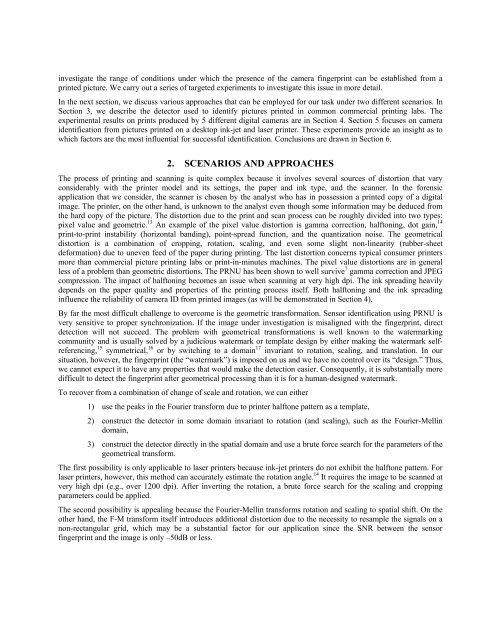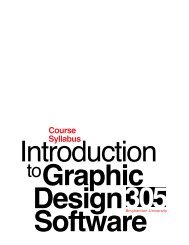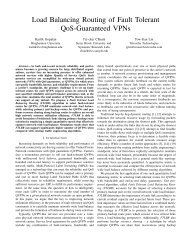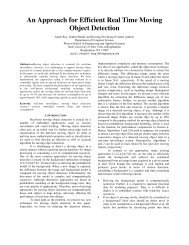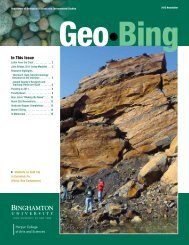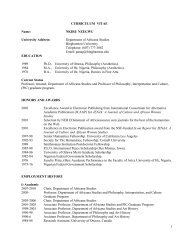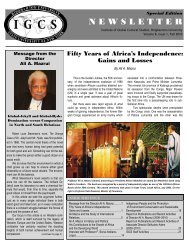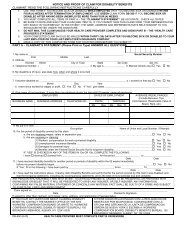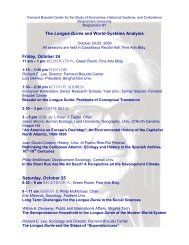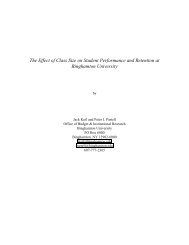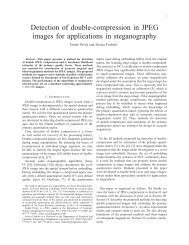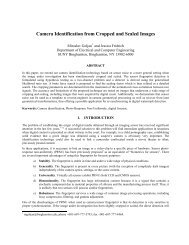Camera Identification from Printed Images
Camera Identification from Printed Images
Camera Identification from Printed Images
Create successful ePaper yourself
Turn your PDF publications into a flip-book with our unique Google optimized e-Paper software.
investigate the range of conditions under which the presence of the camera fingerprint can be established <strong>from</strong> aprinted picture. We carry out a series of targeted experiments to investigate this issue in more detail.In the next section, we discuss various approaches that can be employed for our task under two different scenarios. InSection 3, we describe the detector used to identify pictures printed in common commercial printing labs. Theexperimental results on prints produced by 5 different digital cameras are in Section 4. Section 5 focuses on cameraidentification <strong>from</strong> pictures printed on a desktop ink-jet and laser printer. These experiments provide an insight as towhich factors are the most influential for successful identification. Conclusions are drawn in Section 6.2. SCENARIOS AND APPROACHESThe process of printing and scanning is quite complex because it involves several sources of distortion that varyconsiderably with the printer model and its settings, the paper and ink type, and the scanner. In the forensicapplication that we consider, the scanner is chosen by the analyst who has in possession a printed copy of a digitalimage. The printer, on the other hand, is unknown to the analyst even though some information may be deduced <strong>from</strong>the hard copy of the picture. The distortion due to the print and scan process can be roughly divided into two types:pixel value and geometric. 13 An example of the pixel value distortion is gamma correction, halftoning, dot gain, 14print-to-print instability (horizontal banding), point-spread function, and the quantization noise. The geometricaldistortion is a combination of cropping, rotation, scaling, and even some slight non-linearity (rubber-sheetdeformation) due to uneven feed of the paper during printing. The last distortion concerns typical consumer printersmore than commercial picture printing labs or print-in-minutes machines. The pixel value distortions are in generalless of a problem than geometric distortions. The PRNU has been shown to well survive 7 gamma correction and JPEGcompression. The impact of halftoning becomes an issue when scanning at very high dpi. The ink spreading heavilydepends on the paper quality and properties of the printing process itself. Both halftoning and the ink spreadinginfluence the reliability of camera ID <strong>from</strong> printed images (as will be demonstrated in Section 4).By far the most difficult challenge to overcome is the geometric transformation. Sensor identification using PRNU isvery sensitive to proper synchronization. If the image under investigation is misaligned with the fingerprint, directdetection will not succeed. The problem with geometrical transformations is well known to the watermarkingcommunity and is usually solved by a judicious watermark or template design by either making the watermark selfreferencing,15 symmetrical, 16 or by switching to a domain 17 invariant to rotation, scaling, and translation. In oursituation, however, the fingerprint (the “watermark”) is imposed on us and we have no control over its “design.” Thus,we cannot expect it to have any properties that would make the detection easier. Consequently, it is substantially moredifficult to detect the fingerprint after geometrical processing than it is for a human-designed watermark.To recover <strong>from</strong> a combination of change of scale and rotation, we can either1) use the peaks in the Fourier transform due to printer halftone pattern as a template,2) construct the detector in some domain invariant to rotation (and scaling), such as the Fourier-Mellindomain,3) construct the detector directly in the spatial domain and use a brute force search for the parameters of thegeometrical transform.The first possibility is only applicable to laser printers because ink-jet printers do not exhibit the halftone pattern. Forlaser printers, however, this method can accurately estimate the rotation angle. 14 It requires the image to be scanned atvery high dpi (e.g., over 1200 dpi). After inverting the rotation, a brute force search for the scaling and croppingparameters could be applied.The second possibility is appealing because the Fourier-Mellin transforms rotation and scaling to spatial shift. On theother hand, the F-M transform itself introduces additional distortion due to the necessity to resample the signals on anon-rectangular grid, which may be a substantial factor for our application since the SNR between the sensorfingerprint and the image is only –50dB or less.


